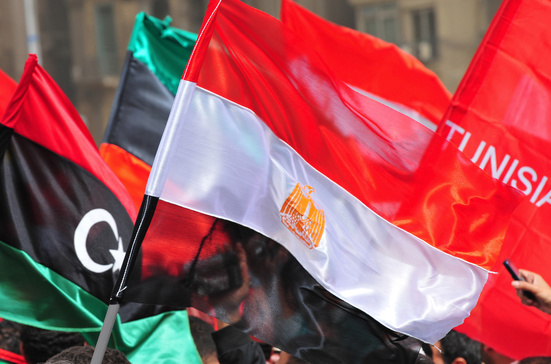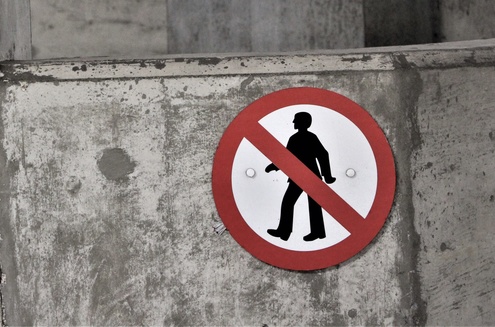Calling it what it is: Torture in Egypt as a crime against humanity

The use of torture by the Egyptian government as a tool for repressing political dissent has a long history, leading to two inquiries by the UN Committee Against Torture (CAT) in 1996 and 2017. In both instances, the CAT found that torture was systematically used by security forces in Egypt.
In a new report submitted to the CAT, REDRESS and a coalition of Egyptian and international civil society organisations (CSOs) - including the Egyptian Initiative for Personal Rights, the Egyptian Commission for Rights and Freedoms, Dignity, and the International Commission of Jurists - argue that the widespread and systematic use of torture by the Egyptian authorities amounts to a crime against humanity under customary international law, by which Egypt is bound.
The report highlights the gravity of torture in Egypt as an international crime that requires the strongest condemnation and response from the international community. The report calls for Egypt to take urgent action to ensure its authorities refrain from using torture and to undertake much-needed reforms to eradicate this practice.
According to Article 7 of the Rome Statute, to be a crime against humanity, torture needs to be “part of a widespread or systematic attack directed against any civilian population, with knowledge of the attack.”
Patterns of torture
Using its overly broad anti-terrorism framework, the Egyptian authorities resort to torture to target individuals because of their real or perceived political and human rights activism. For the authorities this activism is an unwelcome political activity that poses a threat to the Egyptian regime.
Torture in Egypt follows a clear pattern of arbitrary arrest, often followed by incommunicado detention or enforced disappearance, where detainees are tortured or otherwise ill-treated using a variety of methods. Those detained are charged with vague offences linked to national security and are prosecuted without due process guarantees. In many cases, the eventual dismissal of charges is followed by new cases and re-arrests. Those who are eventually freed face travel bans and other restrictions aimed at harassing them and limiting their activities.
Torture victims as civilian population
The common denominator amongst those targeted by torture in Egypt is their political activism against the ruling regime, their work in exposing human rights violations, and their dissent against government policies and official discourse. Tortured victims include lawyers, journalists, bloggers, academics, human rights defenders, women’s rights, and gender activists, LGBTIQ+ individuals, and opposition leaders.
The perpetrators of torture in Egypt
The Egyptian agencies directly implicated in the practice of torture include the National Security Agency, the National Police, and the individuals who lead these institutions. Also implicated are members of the Supreme State Security Prosecution and some arms of the security organ, including the Military Intelligence and the General Intelligence.
The absence of an independent judiciary in Egypt is directly related to the prevalence of torture. It has been the practice of the Egyptian government to reward public prosecutors and judges who are complicit in the perpetration of torture, while punishing those who seek reform.
Widespread and systematic nature of torture in Egypt
The systematic and widespread nature of torture against human rights defenders and others in Egypt has not only been established by the CAT but can be inferred from the concerning trend of arbitrary arrests, torture, criminalisation, and other violations against targeted individuals.
According to the ECRF, between 2015 and 2020, 2,653 people were subjected to enforced disappearance in Egypt before being brought before the prosecution. This is inextricably linked to torture because most acts of torture take place during this period, when the detainee is completely stripped of the protection of the law. As such, most individuals who are forcibly disappeared are also subjected to one or more forms of torture or other ill-treatment.
Additionally, prisons in Egypt are notoriously overcrowded and in bad condition, including by the denial of medical care to detainees. Over 1,100 detainees died in Egypt’s prisons between 2013 and October 2022, with approximately 46 deaths recorded in 2022 alone mainly due to medical negligence. In its most recent Concluding Observations, the UN Human Rights Committee expressed concern over “detainees held for political reasons [being] frequently subjected to particularly harsh conditions, including the deliberate denial of health care, the denial of visits by family members and legal counsel and extended periods of solitary confinement.” The Committee noted that deaths have taken place in places of detention, compounded by an absence of independent, effective, and transparent investigations into such deaths.
Torture in Egypt in furtherance of a State policy
Torture in Egypt has extended beyond random and individual instances into an actual State policy, where the security apparatus purposefully and routinely “acts with the intention to torture”.
The Egyptian government uses ‘states of emergency’ to create loopholes and circumvent rights recognised in the Egyptian Constitution and international law. Similarly, the framework of ‘fighting terrorism’ has generated a pretext for various human rights violations, including torture.
The culture of impunity for torture in Egypt is an integral part of the State policy that allows for the perpetration of torture without fear of penalty. The majority of torture survivors do not pursue domestic claims for fear that reporting will bring more abuse or because they do not think justice is possible. Claims by survivors who do report to State Prosecutors are often ignored and are rarely investigated. In the exceptional instances where survivors’ claims of torture make it to court, they face a sluggish judicial process that, after many delays, often leads to impunity.
The plethora of documentation on the prevalence of torture in Egypt, including decisions from the African Commission, UN human rights bodies, CSO reports, and media reports, establish that military and civilian superiors and commanders knew or should have known of the commission of torture against dissenters and others in Egypt. The widely available evidence of the Egyptian government’s intolerance of dissent shows that State officials engaging in torture would have acted with the knowledge that these acts were being committed as part of an attack against civilian dissenters, in furtherance of a State policy.
Conclusion
The CAT is not a criminal international court or judicial body, but a human rights body. As such, the Committee cannot find individual criminal responsibility for crimes committed in Egypt. However, following precedent by other human rights bodies, the Committee experts could qualify the context in which torture takes place, noting that its widespread and systematic occurrence might amount to a crime against humanity. This finding could be very important to force a change of conduct by the Egyptian authorities, and promote accountability processes, whether under universal jurisdiction, the imposition of human rights sanctions or other measures that can help break the cycle of impunity and violations.

Tags
Related resources
-
- Egypt
- 30.08.23
- Statements
 Read more
Read moreEgypt: Civil Society “Foreign Funding” Case Remains Unclosed
-
- Egypt
- 19.07.23
- Statements
 Read more
Read moreEgypt: Sentencing of academic and researcher Patrick George Zaki

